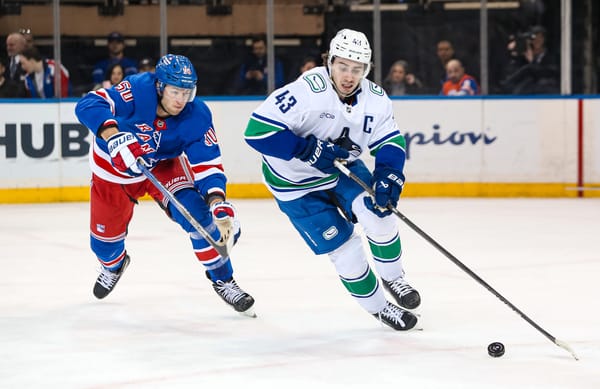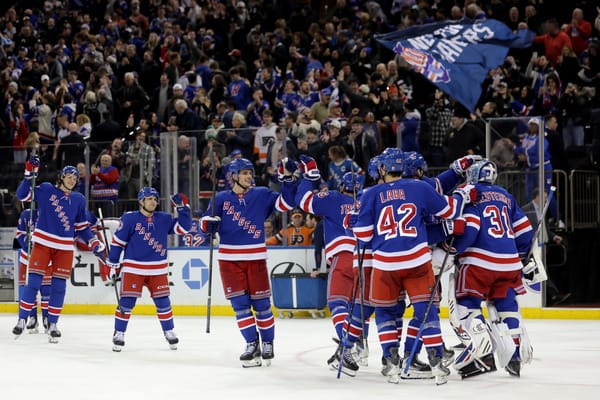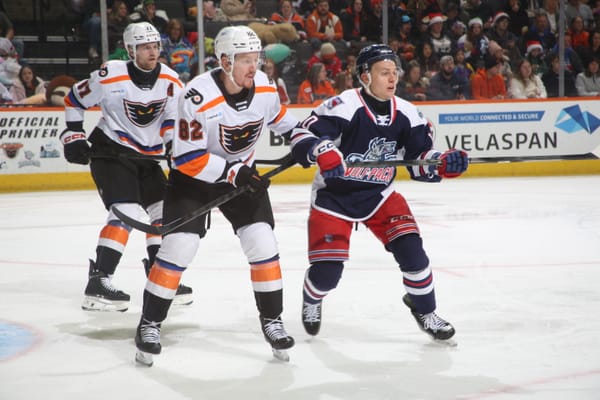Jeff Gorton Has a Huge Decision To Make That Nobody Is Discussing
With the 2017 Expansion Draft currently slated to be the next major event on the New York Rangers’ calendar, the general expectations around what Jeff Gorton will do are cut and dry. Aside from the occasional ludicrous call to leave one of the team’s star forwards exposed in the name of cap space (which is a flawed concept even at its roots), the hockey world expects the Rangers to make the predictable decisions. Those would be as follows:
Protected: Rick Nash, Derek Stepan, Chris Kreider, Mats Zuccarello, J.T. Miller, Mika Zibanejad, Kevin Hayes, Ryan McDonagh, Dan Girardi, Marc Staal, and Henrik Lundqvist.
Aside from the possibility of buying out one of the team’s former blue line pillars and opting to protect Nick Holden, there doesn’t seem to be much intrigue for George McPhee when the time comes to decide which current New York Ranger will become an inaugural member of the Vegas Golden Knights.
However, a deeper look at two of the key cogs in the poorly oiled machine that passes as Alain Vigneault’s hockey team shows that Gorton, Glen Sather, and the rest of the team’s high-level decision makers may need to rethink their strategy ahead of the expansion draft.
Two of New York’s skaters have performed very similarly throughout the past two seasons, to the point where if you didn’t know better you could think of them as interchangeable. Here are those two players on-ice results at five-on-five since the beginning of the 2015-2016 season:
Now, you might look at that data and not see much worth discussing. Player B is slightly better than Player A across the board. What makes this worth noting is that Player A is someone everyone except the occasional crab person acknowledges that the team must protect, while Player B is someone who fans just casually shrug their shoulders and make peace with the fact that they could be playing in the Sin City next season.
If you haven’t figured it out already, Player A is Kevin Hayes, while Player B is Oscar Lindberg. It surprised me when I first dug into the numbers myself and may come as a shock to you as well. Between the narrative that Hayes’ offseason work that resulted in him dropping 20 lbs and sparking a renaissance season for the big bodied forward, and the fact that Oscar Lindberg was a non-factor for the Blueshirts until the calendar turned to 2017 after undergoing simultaneous bilateral hip labral surgery in the previous summer, the buzz around these two players couldn’t have been any different. But between Lindberg’s excellent second half after recovering from surgery and Hayes having the worst season of his professional career, the line that seemingly divided the two has become muddied as of late.
That’s not to say either player should just be left exposed, however. There are various elements for Jeff Gorton to take into consideration before making any sort of decision on the matter. For example, Gorton must weigh the two players’ trade value and what their hypothetical return would be before considering shipping one out for the sake of protecting the other. Hayes would easily bring back more value in any hypothetical trade, so the ability to bring in an impact player in exchange for someone who may not have a future in New York could impact the final decision.
In addition to that, Gorton must realize that Kevin Hayes is more of a known commodity at this point in his career, while there are still question marks surrounding Lindberg. With Hayes having played nearly 500 more minutes at even strength than Lindberg over the last two seasons, and nearly 1400 minutes if you want to take the 2014-15 season into account, the Rangers can be more sure that what they have seen will be what they get in the future. With both players currently sitting at 25 years old, it it likely that both have reached their peak, so Gorton would have to expect Oscar Lindberg to maintain his level of play if he gets elevated into the Top 9.
In addition to those factors, Alain Vigneault will have a say in the matter as well. Vigneault seemingly christened Hayes as his defensive zone specialist this past season, as Hayes’ Relative Zone Starts% of 41.17 “led” the team in defensive usage. For comparison’s sake, the only qualifying Rangers’ forwards to see a greater share of defensive zone starts in any individual season under Vigneault were Brian Boyle, (24.13 in 13-14) Tanner Glass, (33.02 in 14-15, 32.75 in 15-16) Lee Stempniak, (41.12 in 14-15) and Dominic Moore (24.94 in 13-14, 27.62 in 14-15, 22.73 in 15-16). While zone starts’ effects on player performance are dubious at best, that won’t stop the team’s decision makers from seeing value in Hayes’ defensive “prowess” this past season, even at the cost of an overall less effective game.
All in all, Jeff Gorton will have to sit down with his staff and decide which seven forwards will be protected from Vegas. There are valid arguments that that suggest trading Kevin Hayes for an asset and protecting Oscar Lindberg is the correct approach. On the other hand, there are good points that show protecting Hayes and either trading Lindberg or letting him leave for greener pastures as the more sensible option. Either way, New York’s approach to the expansion draft is not as cut and dry as most in the hockey world are making it out to be.
(All data via Corsica)





